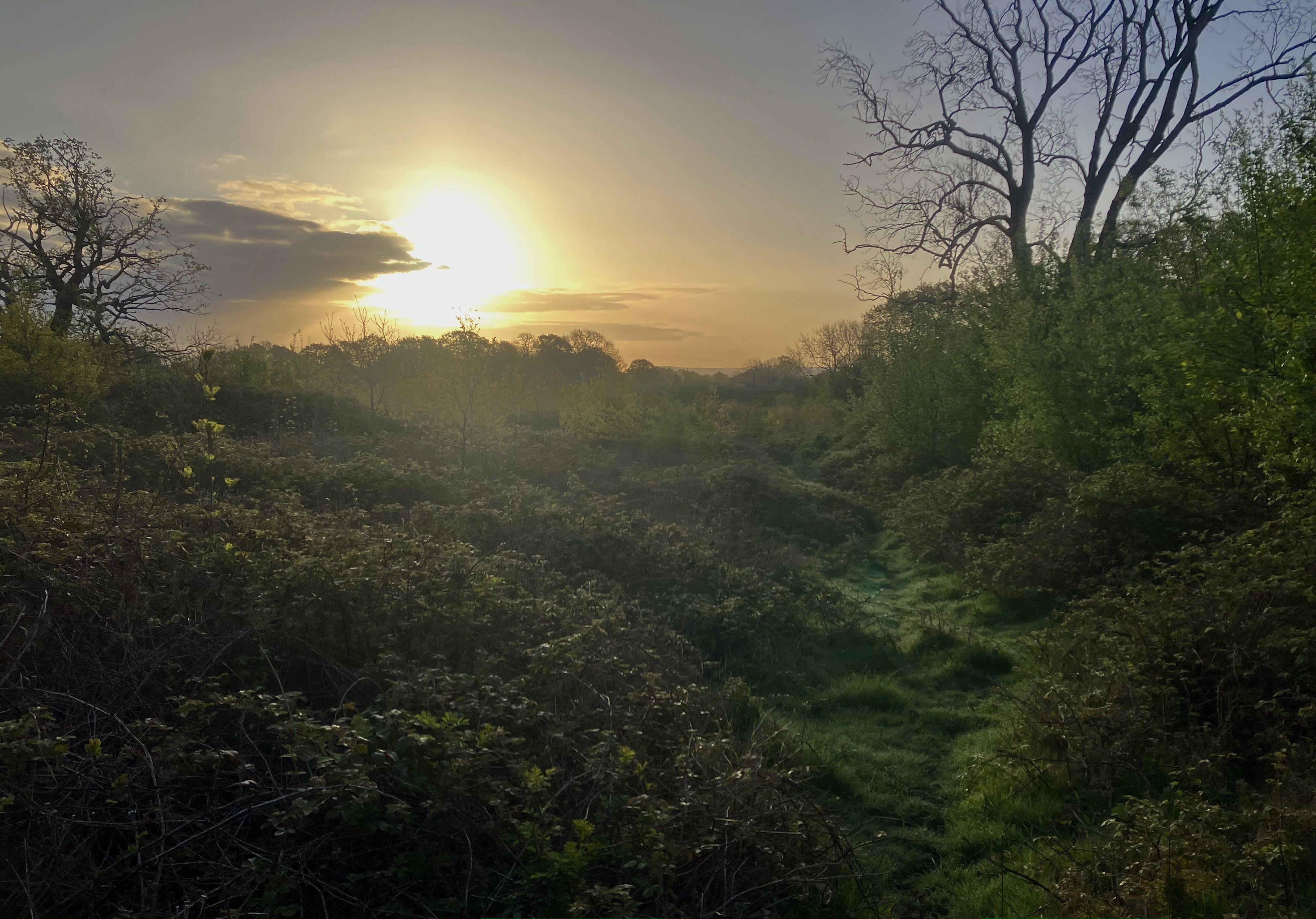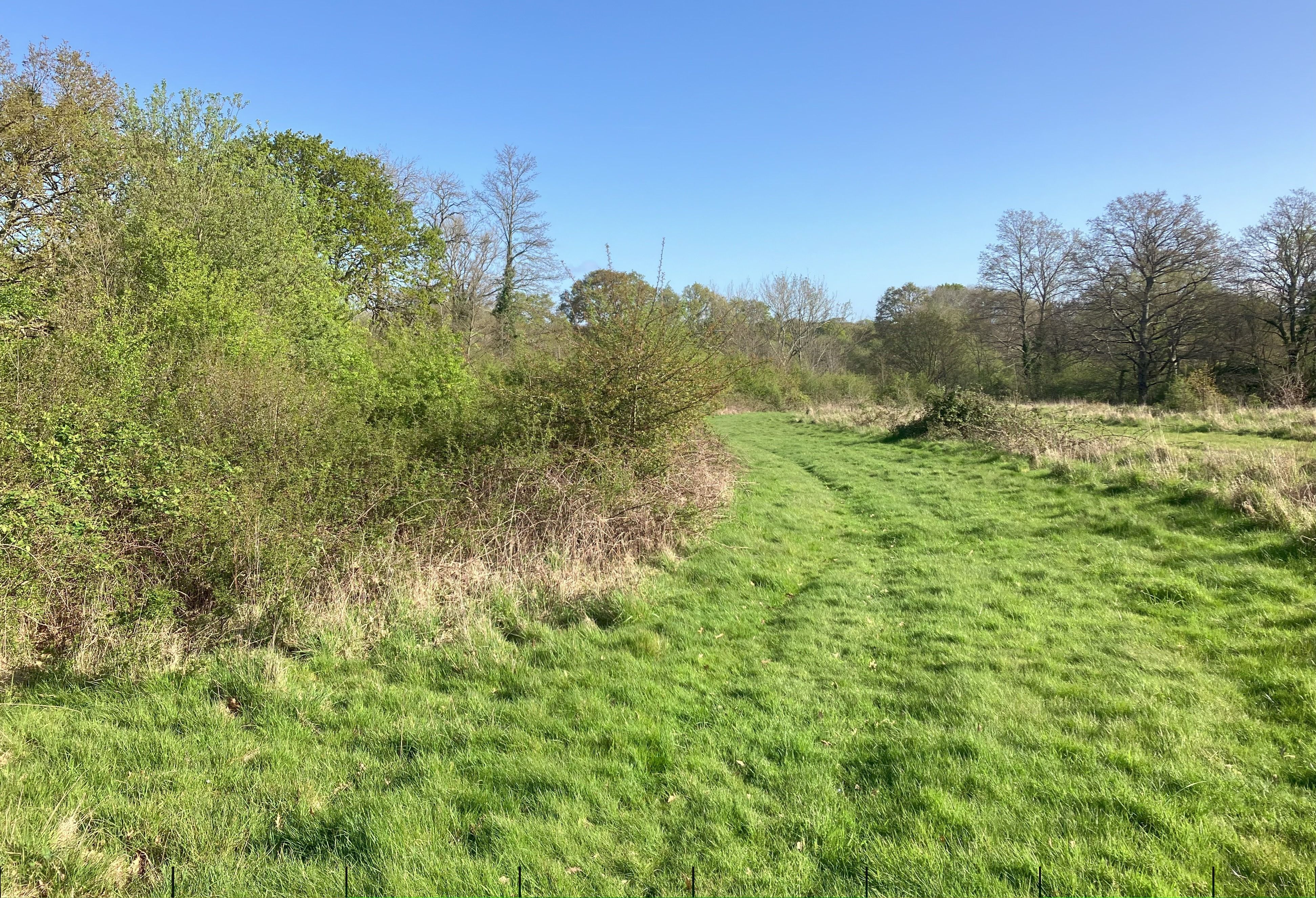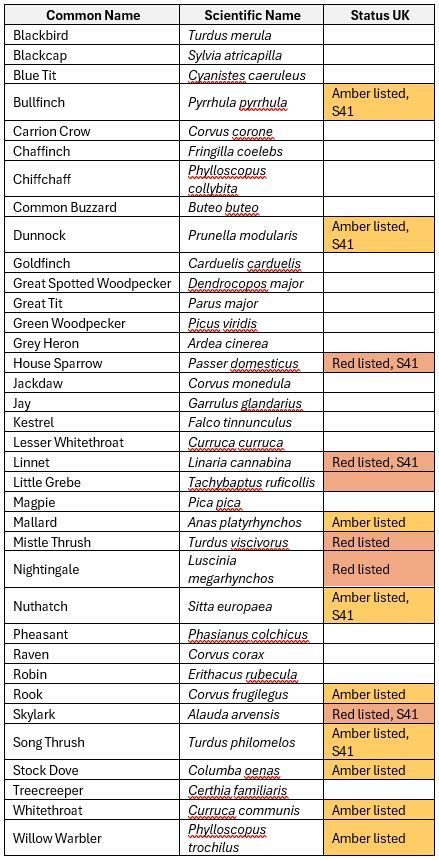Scrubland Superheroes in Spring
By Rachel Bicker - 22 April 2024
Scrubland can be one of the most interesting habitats to survey (in my completely non-biased opinion). Much of the wildlife living in it is rather covert, hidden behind a dense and woody green screen. It means you’re never really sure what will turn up or what action you might suddenly witness, particularly at this time of year as the breeding bird activity picks up speed.
It’s a little before sunrise when I arrive at Fairoak Farm in Wiston for a spring bird survey visit. There is only a light breeze and not too much cloud, and at 4 degrees it’s a bit colder than I would like. That doesn’t put off the dawn chorus of birds though and the tenacious little guys are busily belting out their morning repertoire.

The pockets of scrub on site here are maturing nicely, with some areas reaching 15 years or more in age. The patchiness of the thorny shrubs, their bramble ‘skirts’ graduating down into shorter herbaceous vegetation is exactly the sort of thing I am hoping for; lots of diversity in vegetation structure generally means plentiful plant, animal and fungal species. It’s really at the edges where different habitats meet that you find the best wildlife.
This turns out to be my best bird survey so far in terms of species richness… The day starts off strongly with a pair of Yellowhammers Emberiza citrinella flying in tandem while another sings from a mature hedge. I’m then surprised by the sudden rattling song of a Lesser Whitethroat Sylvia curruca somewhere within a tall patch of Hawthorn and Bramble. That strange song contrasts with the descending trill of a Willow Warbler Phylloscopus trochilus, a real treat to hear these days in Sussex and my favourite UK bird song (and seems to be a consistent soundtrack to the BBC Gone Fishing series). Three feisty Dunnocks Prunella modularis are chasing each other through the lowest part of a hedgerow. I witness the courtship display of a male Linnet Linaria cannabina followed by cooperative preening between another mated pair, firming up their bond. This is topped off with the full blast of a Nightingale Luscinia megarhynchos, singing from the tallest and densest patch of thorn in a high corner of the field. At the end of the survey while walking back to my car, a Sparrowhawk Accipiter nisus flashes past me, cutting between two scrub islands as it homes in on a male Linnet, which drops down into the briar just in time. Moments after the danger passed, the same Linnet bounces up to a high tree top, seeming to give it’s burst of song in elation. Writing this I realise it might all sound a bit embellished, but on an early morning on a rich site like this you can be spectacularly rewarded.
Listen to Rachel's Nightingale here: FO Nightingale song.mp4
Landowner Johnny’s habitat management style is both forthcoming and yet sensitive; cutting a small percentage of scrub right down to the ground during winter means in the growing season it springs back with fresh, denser growth. Knocking back a different patch each year, along with the assistance of nibbling deer and movements of a herd keeping the trails open, all counts toward maintaining this ever-changing habitat in a dynamic sweet spot.

I’m really looking forward to my next bird survey here; will more Nightingales have turned up? Will that Willow Warbler stick around? Will a Garden Warbler finally show up, confusing me by sounding like a Blackcap…. Have I been over-counting Blackcaps?
Current bird species list from Fairoak Farm:


